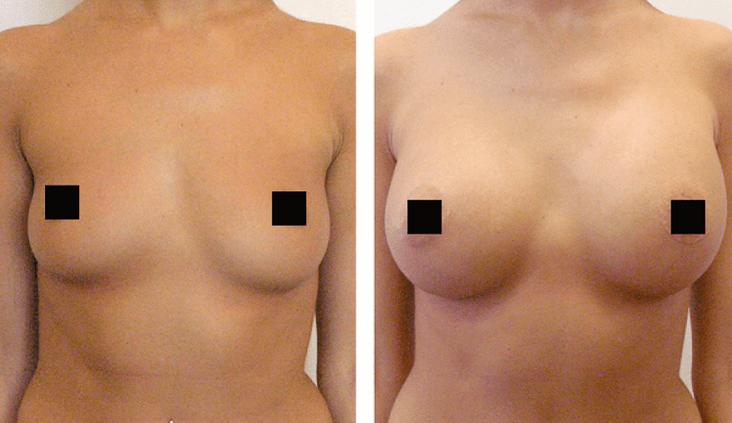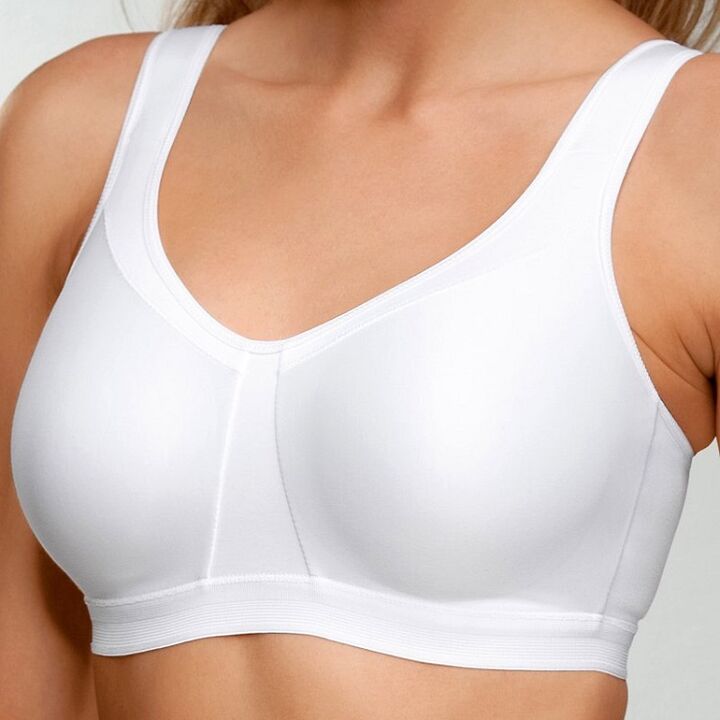Breast augmentation with hyaluronic acid is considered to be the safest method today. Before the advent of this method, mammoplasty was used.
The operation was performed on the chest in which the implants were placed. The breasts grew to several sizes, but looked unnatural.
At the same time, no one can give a full guarantee that the operation will be performed without complications. The appearance of this method of breast augmentation puts women at less risk.

How is breast augmentation done with hyaluronic acid?
Many have heard of hyaluronic acid. Someone knows it as the main component of synovial fluid that provides lubrication of joint cartilage in connective tissues, and someone has heard of it from the world of cosmetology.
In particular, it has been known to maintain skin firmness and elasticity. How does this happen?
Hyaluronic acid has the unique ability to absorb and retain water like a cloud, providing tissue volume and hydration.
Thanks to this feature, this polysaccharide has been used successfully in plastic surgery for breast augmentation.
This technique allows you to get the desired breast size without surgery.
Breast augmentation is performed by gel injections, in particular skin fillers based on hyaluronic acid.
Because these polysaccharide molecules are large and retain large amounts of water, it is similar in consistency to a thick gel. About 300 ml of gel is needed to enlarge one breast.
How is the procedure performed? The procedure is painful, so it is performed under local anesthesia. All necessary tests are performed before the operation and the day of the operation is scheduled.
The non-surgical intervention of breast augmentation takes about 40 minutes. The drug is injected into the chest using a cannula.
This is a special tube that looks like a feather and replaces the needle. A puncture is left at the injection site, on which cosmetic sutures are applied.
The breast is given exactly the shape the patient wants it to have. It is very important that the procedure be performed by an experienced specialist as not all doctors can properly insert the gel into the breast.
On the 2nd and 3rd days after the procedure, unpleasant pain and burning sensation appear in the area of the mammary glands. It is also possible reddening of the skin of the breast, formation of hematomas, itching. All these symptoms will soon disappear.
Recovery period
For 1 month, the patient should not expose the upper body to physical activity. Excessive heat and cold are contraindicated.
You can not put pressure on the breast, namely, do a massage or sleep on it, because the gel may move and the breast may be deformed.
It is recommended to wear a compression garment to support the bust. The recovery period depends on the age of the patient, the quality of the epidermis, the amount of injection gel, and the lifestyle.

Duration of effect
Fillers are divided into absorbent and non-absorbent. The first type of injections are mainly used for breast augmentation because they are based on hyaluronic acid which dissolves rapidly.
The effect of its effect is temporary - from 6 months to one year. Non-absorbable injections are dangerous with the development of various complications, so they are practically not used.
Botox breast augmentation is often confused with skin fillers. The difference is that Botox preparations are harmful to the body because they contain botulinum toxin.
The gel is a filler with hyaluronic acid that increases the volume of the tissue.
What types of breast fillers are used?
There are many different hyaluronic acid fillers for breast augmentation.
Since they differ from each other in their properties, the specialist should select them, taking into account the characteristics of the patient's skin and mammary glands.
It is necessary to consider another point: the gel with hyaluronic acid has an antidote. This is a special enzyme called hyaluronidase. It can ruin a failed outcome.
Contraindications and complications
Is hyaluronic acid contraindicated for breast augmentation? There are a number of cases when it is impossible to use a gel to enlarge the breast.
Contraindications include any breast neoplasm, both benign and malignant.
Such surgeries are not performed even when a woman is planning to become pregnant, as non-absorbed gel residues can compress the milk ducts during lactation. In case of autoimmune diseases, intervention in the mammary gland is contraindicated.
On ultrasound scan of the breast or X-ray examination, the cysts do not differ from the accumulation of filler and are often confused.
This complicates the examination of the organ for possible neoplasms. Palpation also complicates the diagnosis.
If the mammary glands become inflamed, surgery and antibiotics will be needed for treatment.
In order to be perfect, many women risk their health by not paying attention to contraindications.
The effect after the introduction of hyaluronic acid is undeniable and the result is tangible: the breasts become elastic and fat, and the skin is much younger.
But this result is temporary, so you need to repeat the procedure. Such interventions can lead to negative consequences.
Pros and cons of the procedure
This method is not suitable for women who have organ prolapse (ptosis). This procedure will only aggravate the problem.
Hyaluronic acid dissolves over time, but until then, any procedure involving the effects of the mammary glands should not be used.
The fact that this procedure causes minor damage to the mammary gland is a big advantage, but after the drug is injected into the mammary glands, due to the swelling of hyaluronic acid, the soft tissues, vessels and ducts are compressed.
The drug, which occupies a certain place in the chest, acts on the surrounding tissues.
Why was hyaluronic acid breast augmentation banned in France? This method does not pose any particular risk or danger to health.
But as a preventive measure in this country they decided to introduce a ban, since after the introduction of hyaluronic acid, the diagnosis of malignant tumors is very complicated.



























